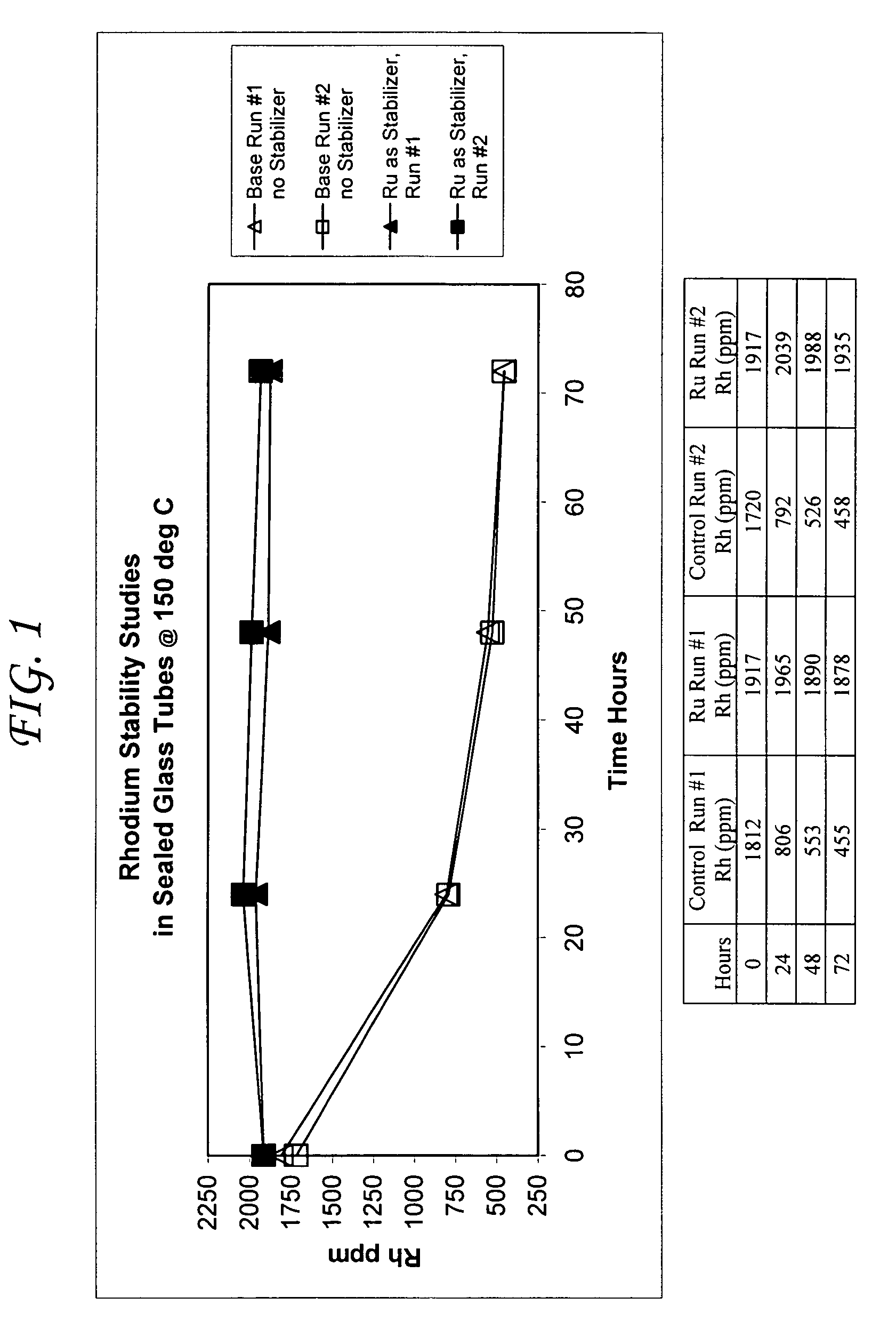Acetic acid production methods incorporating at least one metal salt as a catalyst stabilizer
a technology of catalyst stabilizer and acetic acid, which is applied in the direction of carbon monoxide reaction carboxylic preparation, organic chemistry, organic compound preparation, etc., can solve the problems of catalyst loss, increased capital investment in product recovery and purification equipment, and increased operating costs for acetic acid removal from product water,
- Summary
- Abstract
- Description
- Claims
- Application Information
AI Technical Summary
Benefits of technology
Problems solved by technology
Method used
Image
Examples
Embodiment Construction
[0015]This disclosure relates to processes for producing acetic acid by carbonylation of alkyl alcohols, reactive derivatives of alkyl alcohols, and mixtures thereof. In particular, this disclosure relates to such carbonylation processes taking place at water concentrations of about 0.1 wt. % to about 14 wt. % of the reaction mixture in which the carbonylation reaction takes place. Furthermore, the processes described herein relate to carbonylation reactions catalyzed by rhodium-based-catalyst systems in the presence of a halogen catalyst promoter, and an iodide salt catalyst co-promoter at an iodide concentration equivalent to greater than about 3 wt. % in the reaction mixture. Finally, the processes described herein incorporate at least one ruthenium salt, at least one tin salt, or mixtures thereof in the reaction mixture to stabilize the rhodium-based catalyst systems incorporating the halogen promoter and the iodide salt catalyst co-promoter.
[0016]An important aspect of the proc...
PUM
| Property | Measurement | Unit |
|---|---|---|
| weight % | aaaaa | aaaaa |
| weight % | aaaaa | aaaaa |
| temperature | aaaaa | aaaaa |
Abstract
Description
Claims
Application Information
 Login to View More
Login to View More - R&D
- Intellectual Property
- Life Sciences
- Materials
- Tech Scout
- Unparalleled Data Quality
- Higher Quality Content
- 60% Fewer Hallucinations
Browse by: Latest US Patents, China's latest patents, Technical Efficacy Thesaurus, Application Domain, Technology Topic, Popular Technical Reports.
© 2025 PatSnap. All rights reserved.Legal|Privacy policy|Modern Slavery Act Transparency Statement|Sitemap|About US| Contact US: help@patsnap.com


